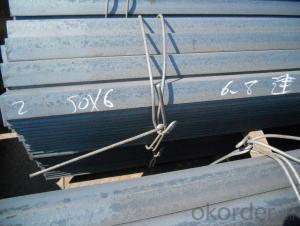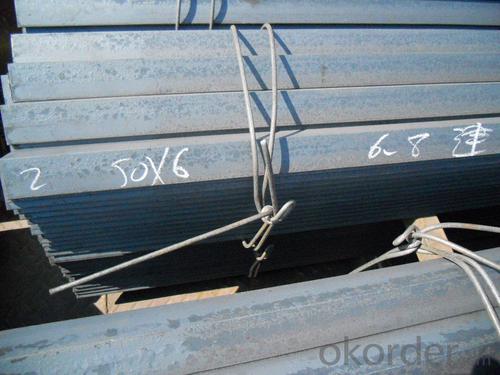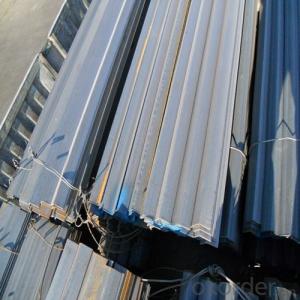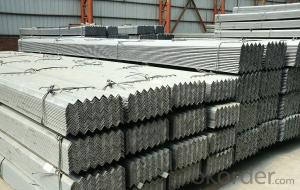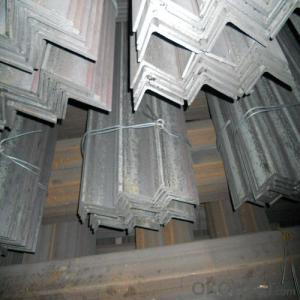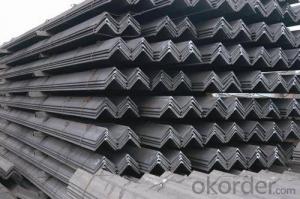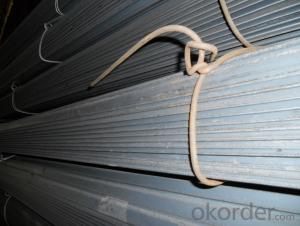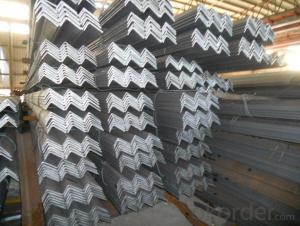Hot Rolled Carbon Steel Angle of High Quality
- Loading Port:
- Tianjin
- Payment Terms:
- TT or LC
- Min Order Qty:
- 20 m.t.
- Supply Capability:
- 1000 m.t./month
OKorder Service Pledge
OKorder Financial Service
You Might Also Like
Product Description:
OKorder is offering Hot Rolled Carbon Steel Equal Angle at great prices with worldwide shipping. Our supplier is a world-class manufacturer of steel, with our products utilized the world over. OKorder annually supplies products to European, North American and Asian markets. We provide quotations within 24 hours of receiving an inquiry and guarantee competitive prices.
Product Applications:
According to the needs of different structures, Angle can compose to different force support component, and also can be the connections between components. It is widely used in various building structures and engineering structures such as roof beams, bridges, transmission towers, hoisting machinery and transport machinery, ships, industrial furnaces, reaction tower, container frame and warehouse etc.
Product Advantages:
OKorder's Equal Angle are durable, strong, and resist corrosion.
Main Product Features:
· Premium quality
· Prompt delivery & seaworthy packing (30 days after receiving deposit)
· Corrosion resistance
· Can be recycled and reused
· Mill test certification
· Professional Service
· Competitive pricing
Product Specifications:
1. Invoicing on theoretical weight or actual weight as customer request
2. Length: 6m, 9m, 12m as following table
3. Sizes
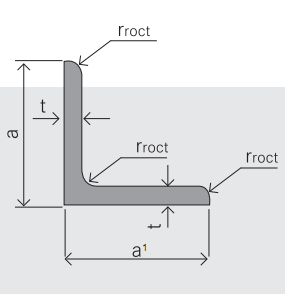
Sizes: 25mm-250mm | ||
a*t | ||
25*2.5-4.0 | 70*6.0-9.0 | 130*9.0-15 |
30*2.5-6.6 | 75*6.0-9.0 | 140*10-14 |
36*3.0-5.0 | 80*5.0-10 | 150*10-20 |
38*2.3-6.0 | 90*7.0-10 | 160*10-16 |
40*3.0-5.0 | 100*6.0-12 | 175*12-15 |
45*4.0-6.0 | 110*8.0-10 | 180*12-18 |
50*4.0-6.0 | 120*6.0-15 | 200*14-25 |
60*4.0-8.0 | 125*8.0-14 | 250*25 |
4.Material details:
Alloy No | Grade | Element (%) | |||||
C | Mn | S | P | Si | |||
Q235 | B | 0.12—0.20 | 0.3—0.7 | ≤0.045 | ≤0.045 | ≤0.3 | |
Alloy No | Grade | Yielding strength point( Mpa) | |||||
Thickness (mm) | |||||||
≤16 | >16--40 | >40--60 | >60--100 | ||||
≥ | |||||||
Q235 | B | 235 | 225 | 215 | 205 | ||
Alloy No | Grade | Tensile strength (Mpa) | Elongation after fracture (%) | ||||
Thickness (mm) | |||||||
≤16 | >16--40 | >40--60 | >60--100 | ||||
≥ | |||||||
Q235 | B | 375--500 | 26 | 25 | 24 | 23 | |
FAQ:
Q1: Why buy Materials & Equipment from OKorder.com?
A1: All products offered byOKorder.com are carefully selected from China's most reliable manufacturing enterprises. Through its ISO certifications, OKorder.com adheres to the highest standards and a commitment to supply chain safety and customer satisfaction.
Q2: How do we guarantee the quality of our products?
A2: We have established an advanced quality management system which conducts strict quality tests at every step, from raw materials to the final product. At the same time, we provide extensive follow-up service assurances as required.
Q3: Can stainless steel rust?
A3: Stainless does not "rust" as you think of regular steel rusting with a red oxide on the surface that flakes off. If you see red rust it is probably due to some iron particles that have contaminated the surface of the stainless steel and it is these iron particles that are rusting. Look at the source of the rusting and see if you can remove it from the surface.
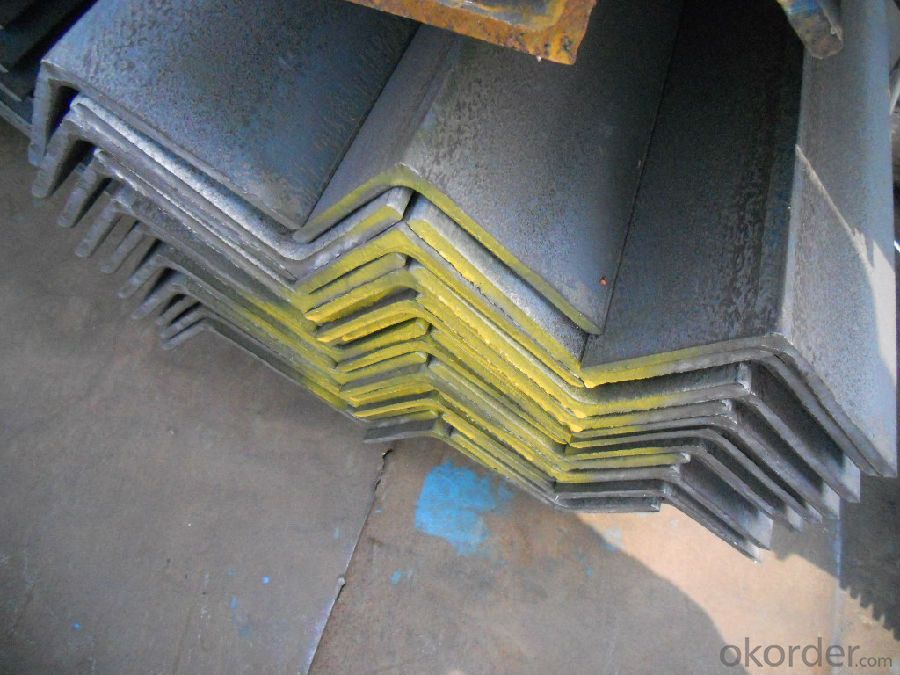
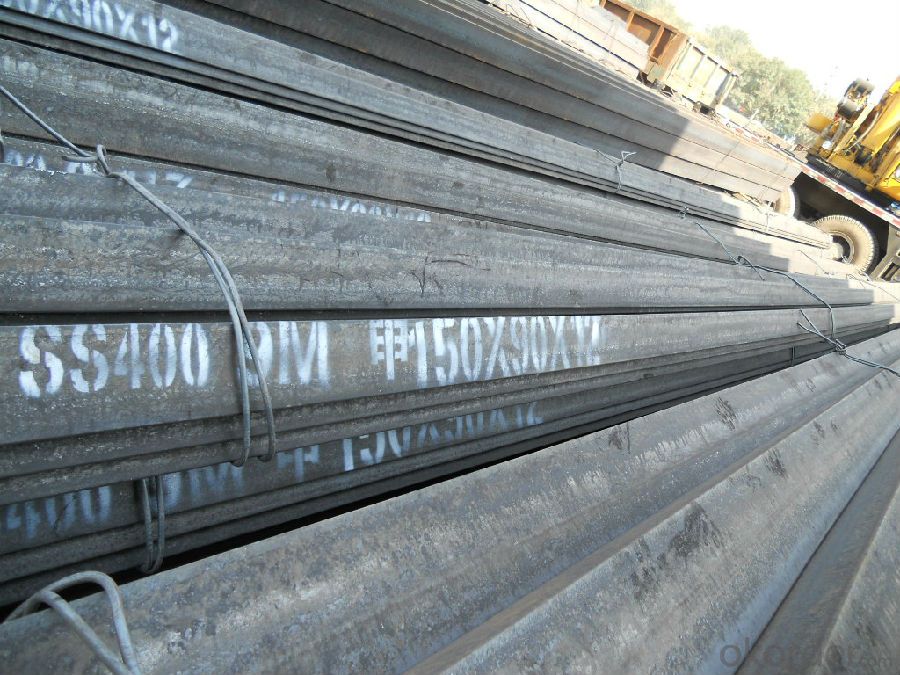
- Q: What are the different surface treatments available for galvanized steel angles?
- There are several surface treatments available for galvanized steel angles to enhance their appearance, durability, and resistance to corrosion. Some of the commonly used surface treatments for galvanized steel angles include: 1. Powder coating: This involves applying a dry powder to the surface of the galvanized steel angle and then heating it to create a durable and attractive finish. Powder coating can be customized to achieve various colors and textures, providing a high-quality and long-lasting surface treatment. 2. Painting: Galvanized steel angles can also be painted with a variety of coatings, such as epoxy, polyurethane, or enamel paint. Painting provides an added layer of protection against corrosion and can be tailored to match specific aesthetic requirements. 3. Hot-dip galvanizing: This surface treatment is the initial process for galvanized steel angles. It involves immersing the steel angles into a bath of molten zinc, which forms a protective layer on the surface. Hot-dip galvanizing provides excellent corrosion resistance and is ideal for outdoor applications. 4. Zinc electroplating: Similar to hot-dip galvanizing, zinc electroplating involves applying a thin layer of zinc to the surface of the steel angle through an electrochemical process. This treatment provides good corrosion protection and can be combined with other surface treatments for added durability. 5. Anodizing: Anodizing is typically used for aluminum surfaces, but it can also be applied to galvanized steel angles. This process involves creating a controlled oxide layer on the surface, which enhances corrosion resistance and provides a decorative finish. 6. Passivation: Passivation is a chemical treatment that removes iron and other impurities from the surface of galvanized steel angles. This treatment helps improve the corrosion resistance of the steel by creating a passive oxide layer. It is important to select the most appropriate surface treatment for galvanized steel angles based on the specific application requirements, budget constraints, and desired aesthetic appearance. Consulting with a professional or supplier can help determine the most suitable surface treatment for your needs.
- Q: What are the common connections or fasteners used with steel angles?
- The common connections or fasteners used with steel angles are bolts, screws, rivets, and welds. These methods are commonly used to securely fasten steel angles to other structural elements or to join multiple steel angles together.
- Q: Can steel angles be used in HVAC ductwork installations?
- Yes, steel angles can be used in HVAC ductwork installations. They are commonly used to provide structural support and reinforcement to the ductwork system, ensuring stability and durability. Steel angles can be easily integrated into the ductwork design, facilitating efficient installation and improving overall system performance.
- Q: How do steel angles contribute to the overall load distribution in a structure?
- The contribution of steel angles to the overall load distribution in a structure cannot be underestimated. These L-shaped beams, also known as angle irons, play a vital role in construction projects. One of the key advantages of steel angles is their ability to offer stability and support to different parts of a structure. These angles are commonly used as braces, reinforcing the framework and preventing excessive movement or deformation. By evenly distributing the load across various sections of the structure, steel angles ensure the stability and integrity of the building. Furthermore, steel angles are frequently employed as connectors between different structural elements. They can be bolted or welded to beams, columns, or plates, acting as connectors that transfer loads from one component to another. This transfer of loads helps redistribute forces and minimize concentrated stress, thereby improving the load-bearing capacity and overall performance of the structure. Moreover, steel angles find use in the construction of platforms, stairs, and other support structures. By providing a secure and stable platform for people or equipment, they contribute to the overall load distribution by safely distributing the weight and forces applied to these structures. In summary, steel angles are indispensable in ensuring the overall load distribution in a structure. They provide stability, support, and connections between various structural components. The even distribution of weight and stress they enable helps prevent structural failures, ensuring the longevity and safety of the building.
- Q: How do you join two steel angles together?
- There are several methods available for joining two steel angles together, depending on the specific application and requirements. Here are a few commonly used techniques: 1. Welding: The most widely used method for joining steel angles is welding. This involves heating the joint to a high temperature and melting a compatible metal filler material to fuse the angles together. Welding creates a strong and permanent bond, but it requires specialized equipment and expertise, so it is usually carried out by trained professionals. 2. Bolting: Another option is to use bolts or screws to connect the steel angles. This involves drilling holes in both angles and securing them with appropriate fasteners. Bolting allows for easier disassembly and modification if necessary, but it may not offer the same level of strength as welding. 3. Riveting: Riveting is a technique that utilizes metal pins or bolts called rivets to hold the steel angles together. It involves drilling holes in the angles and inserting the rivets, which are then hammered or pressed to create a permanent joint. Riveting is commonly employed in structural applications where high strength and load-bearing capacity are essential. 4. Adhesive bonding: In certain cases, adhesive bonding can be used to join steel angles. Specialized adhesives are applied to the joint surfaces, and then the angles are pressed together and left to cure. This method can result in a clean and visually appealing bond, although it may not possess the same strength as other mechanical methods. When choosing a method to join steel angles, it is crucial to consider factors such as load-bearing requirements, structural integrity, accessibility, and the specific conditions of the application. Consulting with a structural engineer or a professional in the field can help determine the most suitable technique for your particular needs.
- Q: Can steel angles be drilled?
- Yes, steel angles can be drilled. Steel angles are commonly used in construction and fabrication projects, and drilling holes in steel angles is a common practice. However, drilling steel angles may require specialized drilling equipment, such as a drill press or a high-speed steel drill bit, due to the hardness of the steel. Additionally, using cutting lubricants or coolants during the drilling process can help to reduce heat and extend the life of the drill bit. Overall, with the right tools and techniques, steel angles can be easily drilled to accommodate various construction and fabrication needs.
- Q: Can steel angles be used in high-rise buildings?
- Yes, steel angles can be used in high-rise buildings. Steel angles are commonly used as structural members in high-rise buildings due to their strength, versatility, and cost-effectiveness. They can be used in various applications such as framing, bracing, and supporting loads. Steel angles provide stability and structural integrity to the building, allowing it to withstand the forces and stresses associated with high-rise structures. Additionally, steel angles can be easily fabricated, manipulated, and connected, making them suitable for the complex and intricate designs often found in high-rise buildings. Overall, steel angles are a reliable and commonly used component in the construction of high-rise buildings.
- Q: What's the chemical reaction between stainless steel and galvanized angle iron?
- Stainless steel and galvanized steel angle, if it is bolted, it is best to add non absorbent insulation gasket.
- Q: Can steel angles be used for temporary or removable structures?
- Yes, steel angles can be used for temporary or removable structures. Steel angles are versatile and commonly used in construction for various applications, including temporary or removable structures. They are often used as framing elements in scaffolding, support structures, and temporary partitions. Steel angles provide structural support and stability, making them suitable for temporary or removable structures that need to be strong and durable. Additionally, steel angles are easy to assemble and disassemble, allowing for convenient installation and removal of the temporary or removable structure.
- Q: How do you handle and install steel angles on a construction site?
- To handle and install steel angles on a construction site, it is important to follow a systematic process. First, ensure that all necessary safety precautions, such as wearing appropriate protective gear, are in place. Then, use appropriate lifting equipment, such as cranes or forklifts, to safely transport and position the steel angles at the desired location. Next, accurately measure and mark the positions where the angles will be secured. Use appropriate tools, such as drills or welding equipment, to fasten the angles securely to the structure, following the specifications and guidelines provided by engineers or construction plans. Finally, inspect the installation to ensure proper alignment, stability, and structural integrity.
Send your message to us
Hot Rolled Carbon Steel Angle of High Quality
- Loading Port:
- Tianjin
- Payment Terms:
- TT or LC
- Min Order Qty:
- 20 m.t.
- Supply Capability:
- 1000 m.t./month
OKorder Service Pledge
OKorder Financial Service
Similar products
Hot products
Hot Searches
Related keywords
